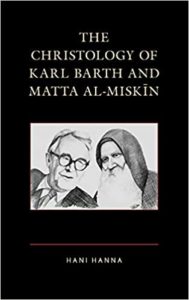
Hani Hanna. The Christology of Karl Barth and Matta al-Miskīn (Lanham, MD: Lexington Books/Fortress Academic, 2019), 280 pp. $100 (hardback).
Scholars still debate what Karl Barth’s thoroughgoing Christocentrism entails for the doctrine of God and anthropology: If Jesus fully expresses the essence of deity, and if Incarnation and atonement historically realize God’s decision to embrace human life without remainder, must we discard such tenets of classical theism as divine impassibility? Moreover, if the Savior perfectly realizes covenantal freedom, must we revise Christologies that construe his human nature as the passive receptacle of the divine Incarnation? In this constructive study, Reformed theologian Hani Hanna brings Barth into conversation with the Coptic Orthodox monk and theologian Matta al-Miskīn (Matthew the Poor). Hanna plausibly argues that these two thinkers independently arrive at strikingly similar conclusions: to wit, traditional substance metaphysics must be replaced with a Christocentric, dynamic ontology that affirms divine passibility and the full human agency of Jesus. In Hanna’s account, each theologian works as a faithful revisionist within his respective tradition. In critical dialogue with Reformed orthodoxy, Barth revamps the hypostatic Christology of Chalcedon (451 CE), whereas Matta revises the Alexandrian Logos-Sarx paradigm of Athanasius and Cyril that formed the conceptual background of that ecumenical council. Both theologians, Hanna claims, achieve parallel objectives by severing dogmatics from Hellenistic philosophical commitments to divine-human “dualism” and recasting key Christian claims within dynamic ontologies that help address modern concerns with questions of revelation, history, and human freedom.
In chapter one, Hanna grounds his constructive thesis in a critical reading of fifth-century Christological debates. How Hanna’s proposal is received will hinge largely upon the extent to which his critical account of traditional hypostatic Christologies and their limitations is accepted. As Hanna sees it, Cyril, the lodestar of Coptic orthodoxy, rightly stressed Jesus’ singular, personal identity as the Word incarnate as the locus of salvation. Nestorius, his Antiochene opponent, affirmed the full distinction of divine and human natures more robustly than Cyril, but in doing so he risked compromising Christ’s personal unity. Yet both Cyril and Nestorius, according to Hanna, shared dubious metaphysical presuppositions which reified the distinction between the infinite God and finite creatures in terms of “static,” abstract essences. Whether “the Absolute” is conceived more in terms of the ineffable one of Neoplatonism or the unmoved mover of Aristotle, substance metaphysics has infelicitous consequences for the coherence of theology, he claims. In short, God so conceived remains aloof from human sin and suffering while the Incarnation is reduced to paradox or metaphor. Holding this framework in tension with the biblical narrative forces Cyril, Hanna claims, to make apophatic appeals to divine mystery which entail a sacrifice of the intellect—chief of which is the paradox that in Christ, the divine Son suffered “impassibly.”
This (ostensible) dualism entails untoward consequences for Jesus’ humanity as well, Hanna claims Cyril rightly stressed the priority of divine initiative in the hypostatic union but construed it such that Jesus’ human nature is seen as a passive instrument subsisting wholly within the Logos, and thus lacking any independent intentional agency. Like other modern critics, Hanna argues that these moves risk rendering Jesus as something less than a full human being. Compare, for example, the formidable critique of Alexandrian Christology by Wolfart Pannenberg in chapter 8 of Jesus: God and Man (Westminster Press, 1968). Chalcedon, more a hedge against heresies than a basis for positive construction, reiterated these inherent tensions in Alexandrian Christology rather than resolving them, and these problems ramified in subsequent tradition, both in the Christian East and West. According to Hanna, these moves have diverted theology from the stark realism of the biblical narrative. Jesus’ cry of dereliction from the cross, in particular, should push theologians to view divine love as kenotic, suffering freedom for humanity.
The next three chapters explore Barth’s mature dogmatics, which initiates an intervention into these debates. According to Hanna, one cannot pigeonhole Barth’s Christology as strictly following Alexandrian, Antiochene, or Chalcedonian precedents. However, Barth’s commitment to the actuality of Incarnation and atonement remains fundamental. The ancient tradition, Hanna argues, honed in on soteriology and extrapolated Christological predicates as the conditions for the possibility of Christ’s saving agency. Barth, in Hanna’s view, grounds theology in concrete revelation, the actuality of the covenant in which the Triune God just is who God reveals Godself to be. This move, Hanna avers, allows Barth to parry modern worries—e.g., those of Schleiermacher, Hegel, and Feuerbach, in particular—about the knowability of God while addressing these modern thinkers’ concern for the free human agent acting within history. Atonement, Barth insists, consists in events that transpire in this world, in our history — even as it is grounded in an antecedent decision in God’s eternal election of humanity as God’s covenant partner. Hanna follows Bruce L. McCormack in situating the decisive turning point in the later Barth’s theological development within the doctrine of election (see Karl Barth’s Critically Realistic Dialectical Theology, Oxford, 1995; CD II/2). The personal unity of the Redeemer subsists in God’s primal decision to be for us without remainder in Christ, who is the electing God and the elect human. This paradigm shift comes to fruition in the doctrine of reconciliation (CD IV/1-3). There, Barth integrates Christology and soteriology by mapping Calvin’s account of Christ as prophet, priest, and king with the later Reformed emphasis on humiliation and exaltation: in the person of the Mediator, God embraces suffering and death in humility while exalting the human covenant partner to sanctity and renewed vocation in the Spirit. This narrative framework, as Hanna sees it, eschews attempts to define divinity and humanity as abstract, self-contained “natures.” This revised covenantal ontology, Hanna argues, resolves the lacunae of classical Christology by affirming God’s eternal freedom, constituted as self-offering love, and a free and fulsome human response. Building upon Barth, Hanna replaces notions of divine impassibility with a view of divine immutability, meaning a steadfastness of God’s moral character that reaches its pinnacle on the cross of Christ. Concomitantly, Hanna retrieves from Barth a covenantal ontology centered on the Christ event as a perfect consilience of divine and human wills: The historical Jesus actualizes and reveals God’s primal election of humankind to a free partnership. This perfect community (Gemeinschaft) between the divine and human covenant partners in Christ is not static but unfolds across the Savior’s life in a process of uniting (Vereinigung). Hanna writes: “For Barth, Jesus’ life is identical with God’s. However, this identity is actualistic; it is a life of fellowship between God and a human agent” (p. 106).
Since Matta al-Miskīn probably read little of Barth, and none of the Dogmatics, the congruities between the two thinkers that Hanna ably analyzes are striking. Hannah traces these parallels in two chapters that explore Matta’s “covenantal ontology” and “historicized Christology,” respectively. Unlike the dogmatic academic theologian in Basel, the Egyptian monastic leader worked largely in pastoral genres, with writings spanning biblical interpretation, spirituality, and even popular journalism. Both thinkers, though, were attuned to modern theological currents. These convergences, Hanna claims, justify his reading of Matta’s more occasional writings in light of Barth’s more systematic categories. Thus, in moves that evoke Barth’s doctrine of reconciliation, Matta defines the oneness of Christ dynamically, within a history consisting in a twofold movement—the Incarnation (or kenosis) of the Son of God and the exaltation (or theosis) of the Son of Man. Though Matta’s early thought was rooted in Alexandrian substance metaphysics, throughout his career he gradually moved beyond its strictures, according to Hanna. What emerged was a narrative-oriented reconstruction of Christ’s person and work, in which the Incarnation is presented as “one history, starting in eternity-past and rolling towards eternity-future. The subject of this history is the human Son of God, who is temporally the Father’s acting agent as the representative of all humanity” (p. 141). In contrast with a Greek philosophical construal of substances as self-contained realities, Matta’s theological ontology conceives God’s being relationally, intrinsically oriented toward fellowship with God’s creatures. Hanna labels this paradigm “covenantal realism,” which he discerns as Matta’s third way beyond a “mysticism” that dissolves humanity into divinity through an unmediated union, and an apologetic “rationalism” that “puts God in a box” (p. 142). Matta’s solution to the problem of how God becomes human in Christ while remaining divine Hanna labels a “correlation of grace”—a mutual openness between the Holy Spirit and the human being. Matta makes claims that evoke Barth’s doctrine of election. He claims that the Logos incarnandus (the eternal Word) is always already oriented to its historical realization as the Logos incarnatus (the Word made flesh). Suffering is depicted as a potentiality in divine life — not an evil in itself. The soteriological heartbeat of Christology is Jesus’ free decision to suffer on the cross for human sinfulness. The Mediator’s oneness consists in the harmonic, covenantal decision in both his humanity and his deity to give himself for us and our salvation. It contrasts starkly with a fallen, Adamic suffering marked by selfishness. Christ suffered in his divine nature and being, and not merely in his human nature, as many traditional theologians have held, as Hanna reads Matta. Matta’s historicized Christology conceives the being-in-act of Jesus Christ as one event, in eternal and temporal dimensions, realized in two movements of God’s kenotic embrace of creation and the deification of Jesus’ human life, which, not limited to the initiating moment of Incarnation, unfolds throughout the events and free obedient decisions of his life from the River Jordan to Golgotha. Matta parries the worry of some Coptic contemporaries, which no doubt Barth in his own way would have shared, that this process of deification, in which our own humanity participates by extension, abrogates the Creator-creature distinction. The full agency of human life, enacted historically, is never subsumed by the indwelling Spirit. As is also the case with Matta’s view of the church as the continuation of the Incarnation, according to Hanna, Matta’s language of deification includes elements of hyperbole leading to unfortunate ambiguities.
In the conclusion of his thorough study, Hanna hopes his comparison between Barth and Matta could model and foster ecumenical dialogue across the Christian East and West as well as interfaith dialgoue. Hanna writes: “The supralapsarian Christology of Barth and Matta, as grounded in covenantal election, provides a basis on which the reality of God’s salvific presence outside the bounds of Christianity may be intelligibly affirmed without compromising the particularity and commitments of the Christian faith” (p. 238). Critics may question whether Hanna has fairly characterized such classical Christologies and theologies, and fuller questions in a Barth-Matta dialogue, too, remain to be probed. Still, Hanna’s account of the two thinkers demonstrates genuine lines of dialogue that could enrich academic theologies and the confession of the church today.
J. Scott Jackson, Independent Scholar
The views expressed here are strictly those of the author; they do not necessarily represent the views of the Center for Barth Studies or Princeton Theological Seminary.


